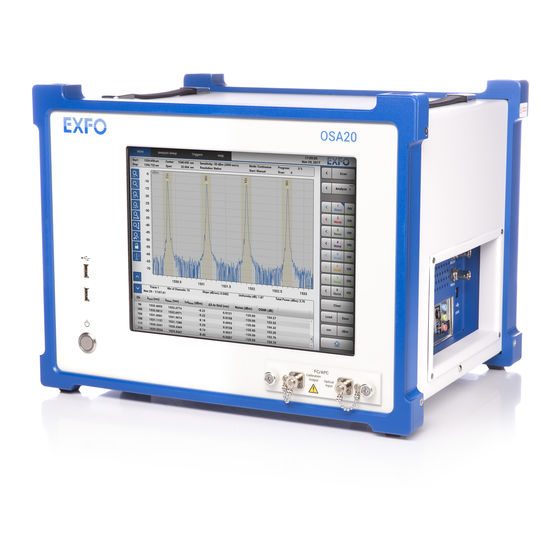
EXFO OSA20 Manuals
Manuals and User Guides for EXFO OSA20. We have 3 EXFO OSA20 manuals available for free PDF download: User Manual, Getting Started
EXFO OSA20 User Manual (148 pages)
Optical spectrum analyzer
Brand: EXFO
|
Category: Measuring Instruments
|
Size: 3 MB
Table of Contents
Advertisement
EXFO OSA20 User Manual (166 pages)
Optical Spectrum Analyzer
Brand: EXFO
|
Category: Measuring Instruments
|
Size: 3 MB
Table of Contents
EXFO OSA20 Getting Started (24 pages)
Optical Spectrum Analyzer
Brand: EXFO
|
Category: Measuring Instruments
|
Size: 1 MB
Table of Contents
Advertisement
Advertisement


